Ready to embrace fall’s offerings and leave the leaves for wildlife while still keeping your yard looking tidy? We have tips to keep your neighbors and homeowners association happy while enriching our own refuges for wildlife and plant community partners.
Life in the garden continues in the cool season, even if less visible. With a supportive habitat, the creatures that inhabit our gardens in spring and summer remain nearby for healthy populations.
To enjoy the color-changing autumnal foliage without the hustle and bustle of the associated leaf cleanup, let them remain in place or distribute them to benefit trees, shrubs, perennials, flowering bulbs, and overwintering pollinators. This is one step in connecting our gardens to the surrounding ecology. Others include incorporating native plants, promoting habitat for wildlife and pollinators, and resource conservation.
Gardens of any scale can utilize the natural resource of autumn leaves. It may take revising our aesthetic or perspective a bit to appreciate the value of a naturalized setting, but working with nature and its cycles yields the rewards of a more balanced garden ecosystem.
Power of Leaves
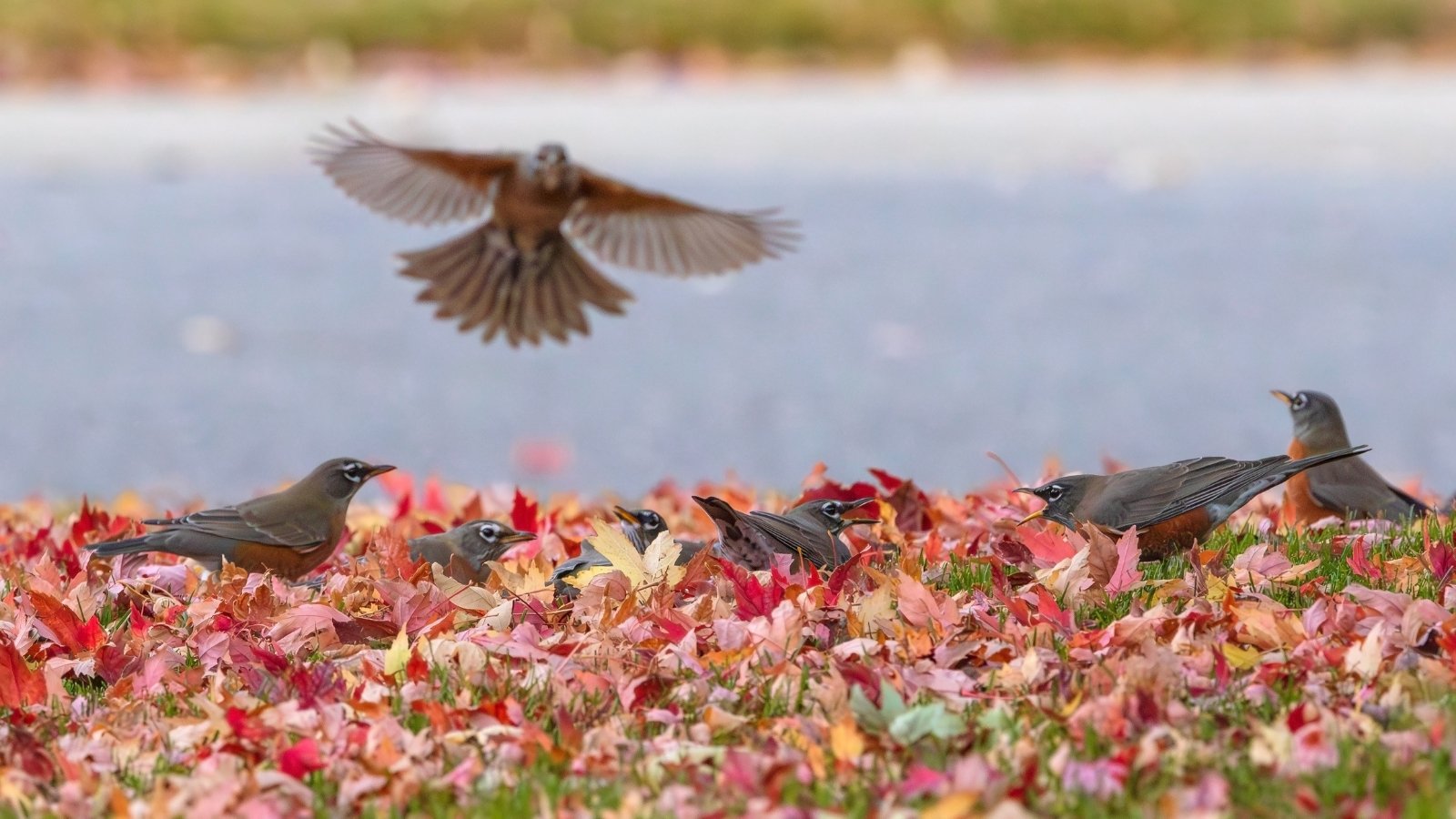
As leaves naturally drop from deciduous trees, shrubs, and herbaceous perennials, they create a layer of coverage at the base of the plant. This foundation suppresses weeds and competition, increases moisture retention, and supplies nutrients at the root level as they break down.
Leaves become ready-made compost, and they promote habitat for songbirds, small mammals, pollinators, reptiles, and amphibians. The National Wildlife Federation designates the month of October as “Leave the Leaves” month, with a seasonal campaign to promote the merits of the autumnal resource. A recent survey found that most of us are open to keeping and utilizing leaves onsite.
Mulch and Fertilizer
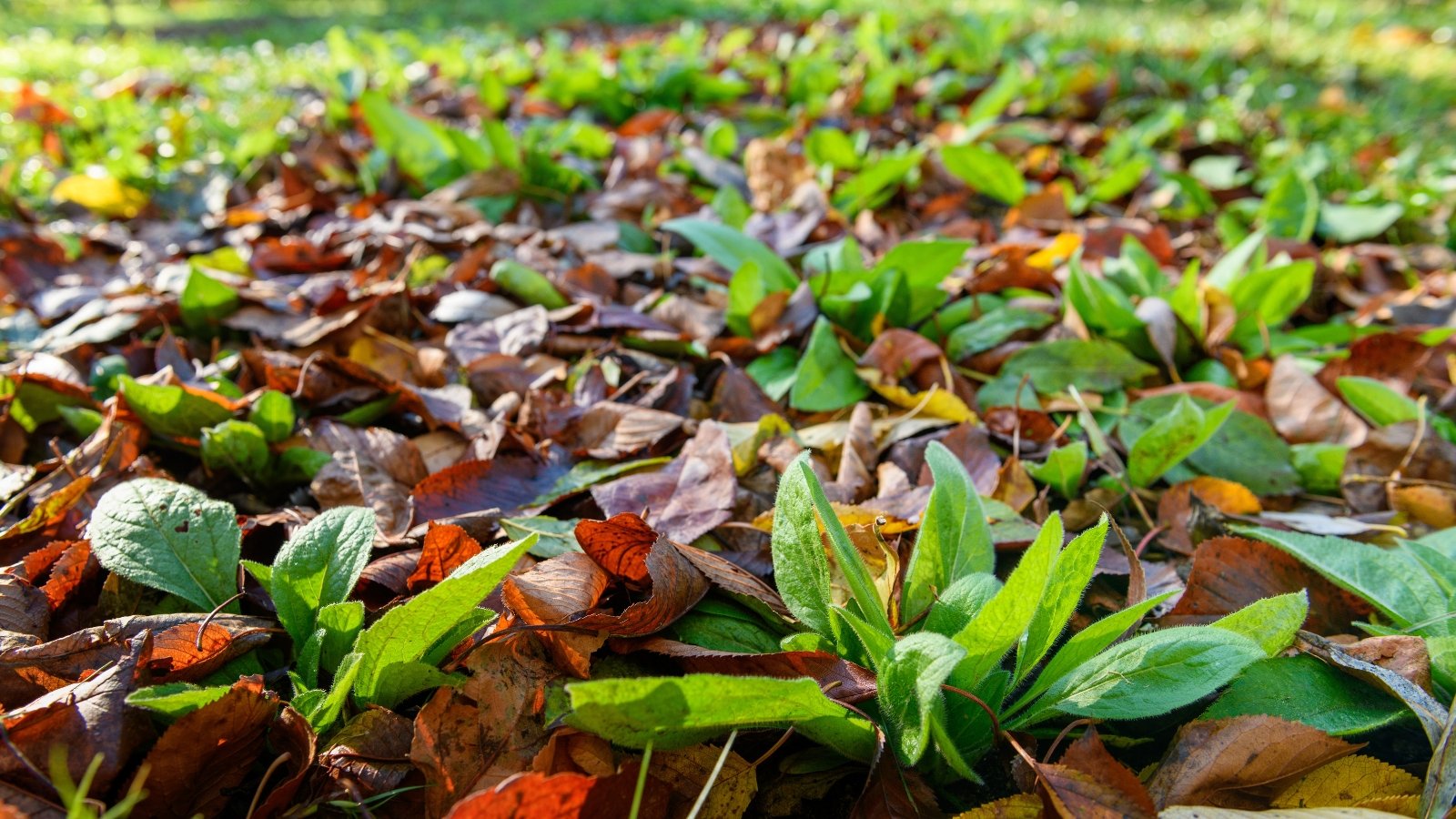
Nature’s ready supply of mulch and fertilizer is a renewable resource, right from the branch, and a mulch, compost, and soil conditioner all in one. They provide insulation, moisture retention, weed suppression, and nutrition through decomposition.
Using them saves money that would go into purchased mulch or fertilizers. Keeping them on your property, out of the landfill, reduces the carbon footprint and gas emissions at a larger scale. The U.S. Environmental Protection Agency reports that 13% of landfill material each year is leaves and organic yard debris. As these decompose without oxygen, they emit greenhouse gases like methane.
Pollinator and Wildlife Resources
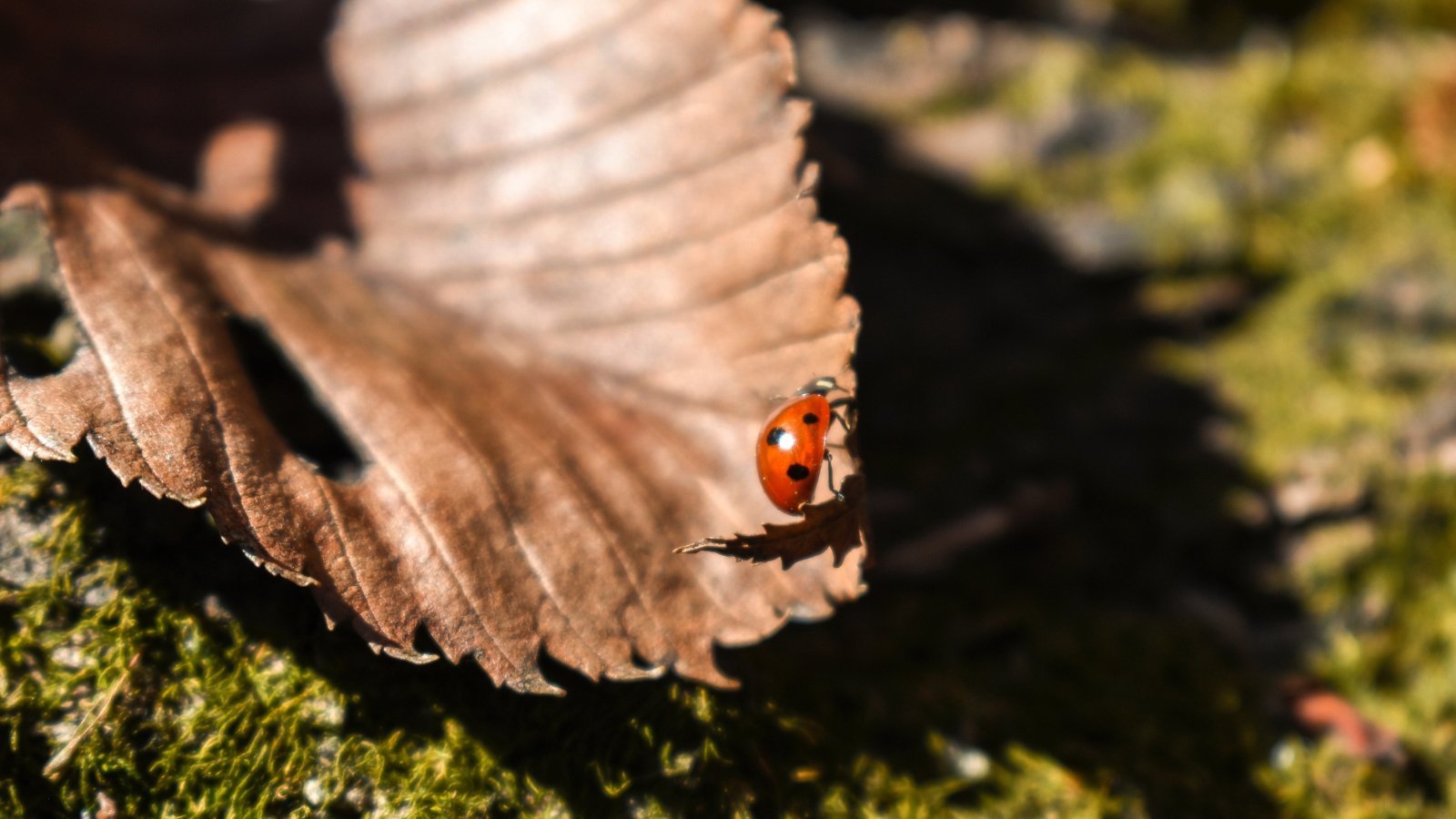
A hidden world of biodiversity below the leaves provides rich wildlife habitat and promotes soil health. With the added benefit of promoting stronger, healthier plants, this is a win for the site. The creatures that live in our gardens in spring and summer stay local in the cool season with a supportive habitat; they’re just more hidden and less active.
Many species overwinter and lay eggs in fallen leaves. Earthworms and myriad invertebrates inhabit the underlayer and convert organic material into nutrients. Fireflies and other beetles dwell in the leaf layer, as do bumblebee queens who bury themselves in the leaves to overwinter. The queens go on to lead the future population of pollinators as temperatures warm. Butterfly and moth pupae overwinter beneath to emerge in spring.
Leaving the leaves is a pollinator-friendly practice. It also promotes the food web for songbirds that utilize caterpillars and insects as staples of their diets.
Out of Sight
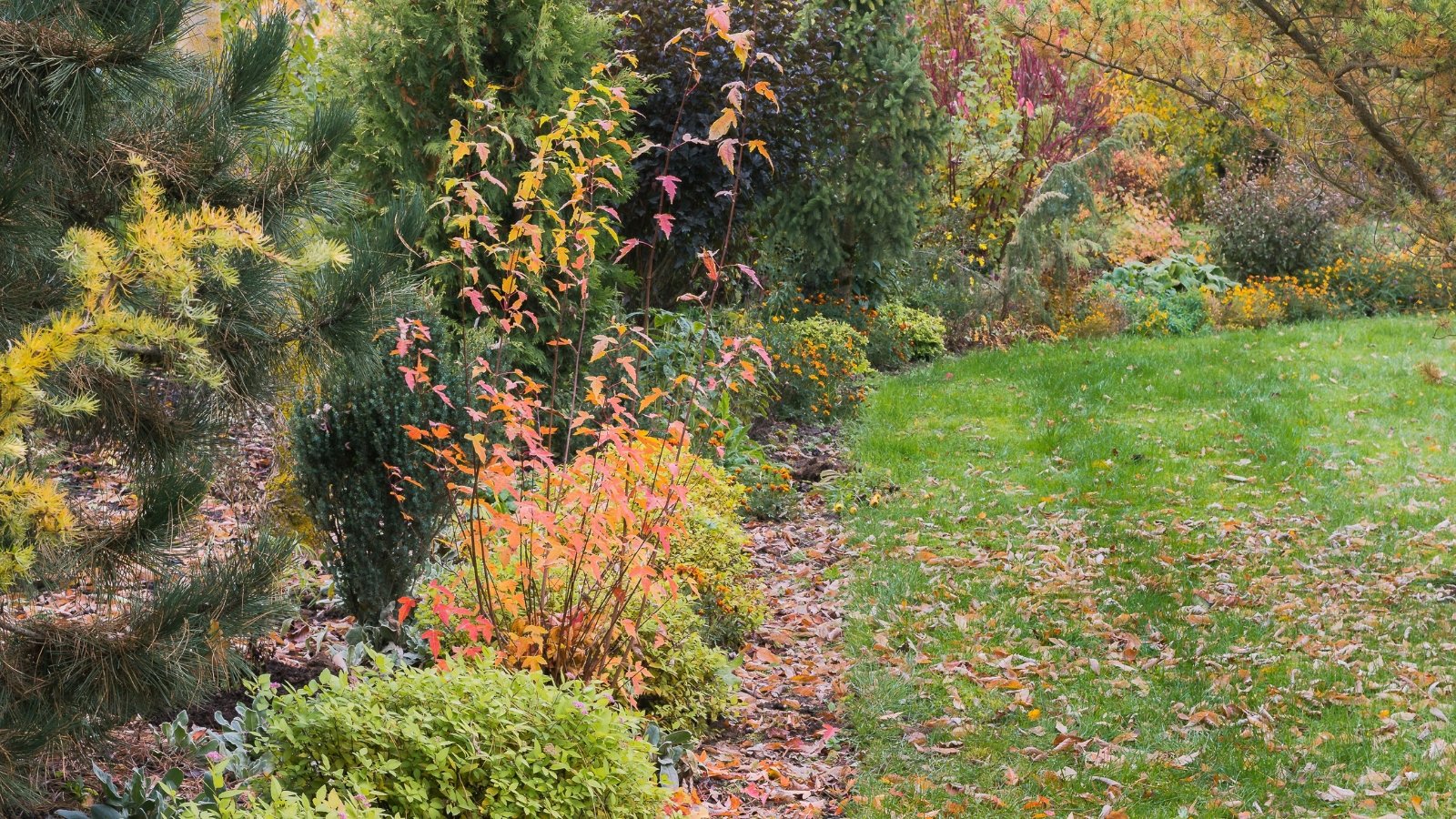
Many homeowners associations or municipalities require residents to remove leaves. Mainly, this relates to keeping them off the lawn or from being scattered about to maintain an overall neat appearance. Preferences are, of course, personal and subjective, just as garden styles are. If lawn health and a tidy look are priorities, getting creative with repurposing leaf material is the key.
So, how to keep the leaves but still retain a clean aesthetic? Move them around. Nothing says they have to stay in place. Of course, they can, too, for effortless enrichment. The aim of keeping them on the property is a good guide.
If needed, get them out of the sightline. Move them to backyards or corners, so they’re unseen and don’t impact curb appeal. There are several ways to incorporate them as a natural resource, which we’ll explore below.
Wildfire risk is an important factor for arid regions prone to fire concerns; It’s possible to have a naturalized yard while following essential fire safe gardening practices. These exist around leaf utilization, too, to reduce fuel buildup near structures. Adapt the concept to your local situation.
You’ve worked hard to create a thriving landscape with biodiversity and pollinator-rich resources. Come autumn, nature continues the work for you.
Mulch the Beds
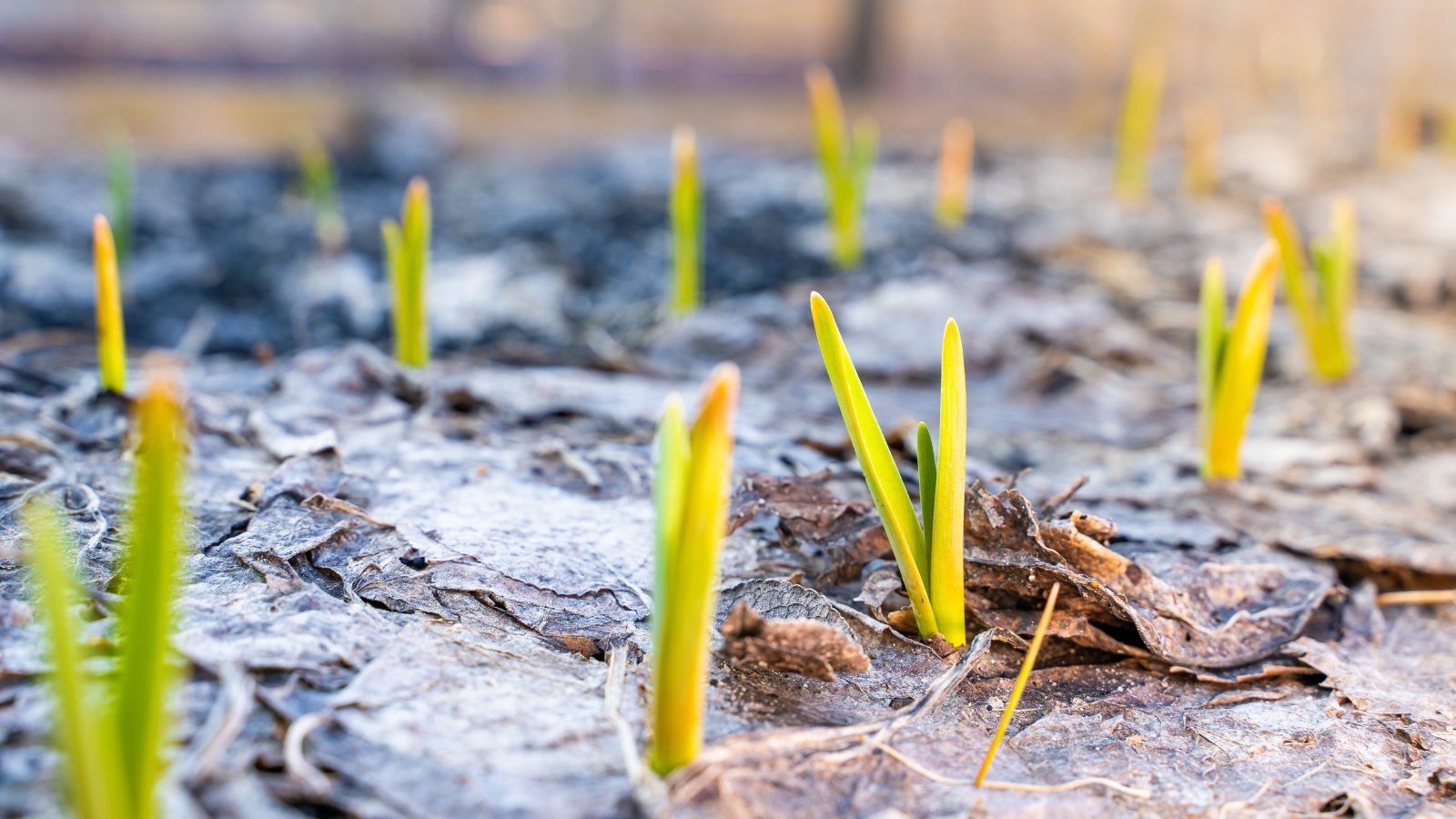
A top way to easily use and consolidate leaf litter is in garden beds and around trees. To use leaves as mulch, place intact leaves as a natural cover across the beds (in the southeast, we often use pine straw, which is the same concept). Leave them where they drop or lightly rake whole leaves into beds to add insulation for roots as temperatures drop.
Apply a thick, three- to five-inch layer. Because the leaves break down in the elements, starting thicker gives lasting coverage. Keep the layer off of woody stems to prevent fungal problems and maintain air circulation. For borderline hardy specimens (e.g., roses and hydrangeas) that benefit from winter protection, add a layer of leaves atop the crown in dormancy.
To keep dropped foliage from blowing around and being displaced, wet the layer. It then forms a mat that stays in place. Come spring, the thinning layer allows for new growth to emerge.
If your yard doesn’t have enough leaves for full bed coverage, you may want to call on your neighbors. They may have bagged theirs (easy to transport and distribute) or have tarp loads to spare.
Preserve Lawn Health

A smattering of leaves here and there won’t harm grass. A thick layer (two inches or more) can damage turf and cause dieback. The mat promotes damp conditions that foster fungal diseases and prevent sunlight and moisture from accessing the blades.
With so many garden benefits, we won’t mind moving the leaves around to tidy the turf and nourish beds. Or, chop them with a regular mow session so they break down to nourish the grass while creating a clean aesthetic.
Reimagine Turf
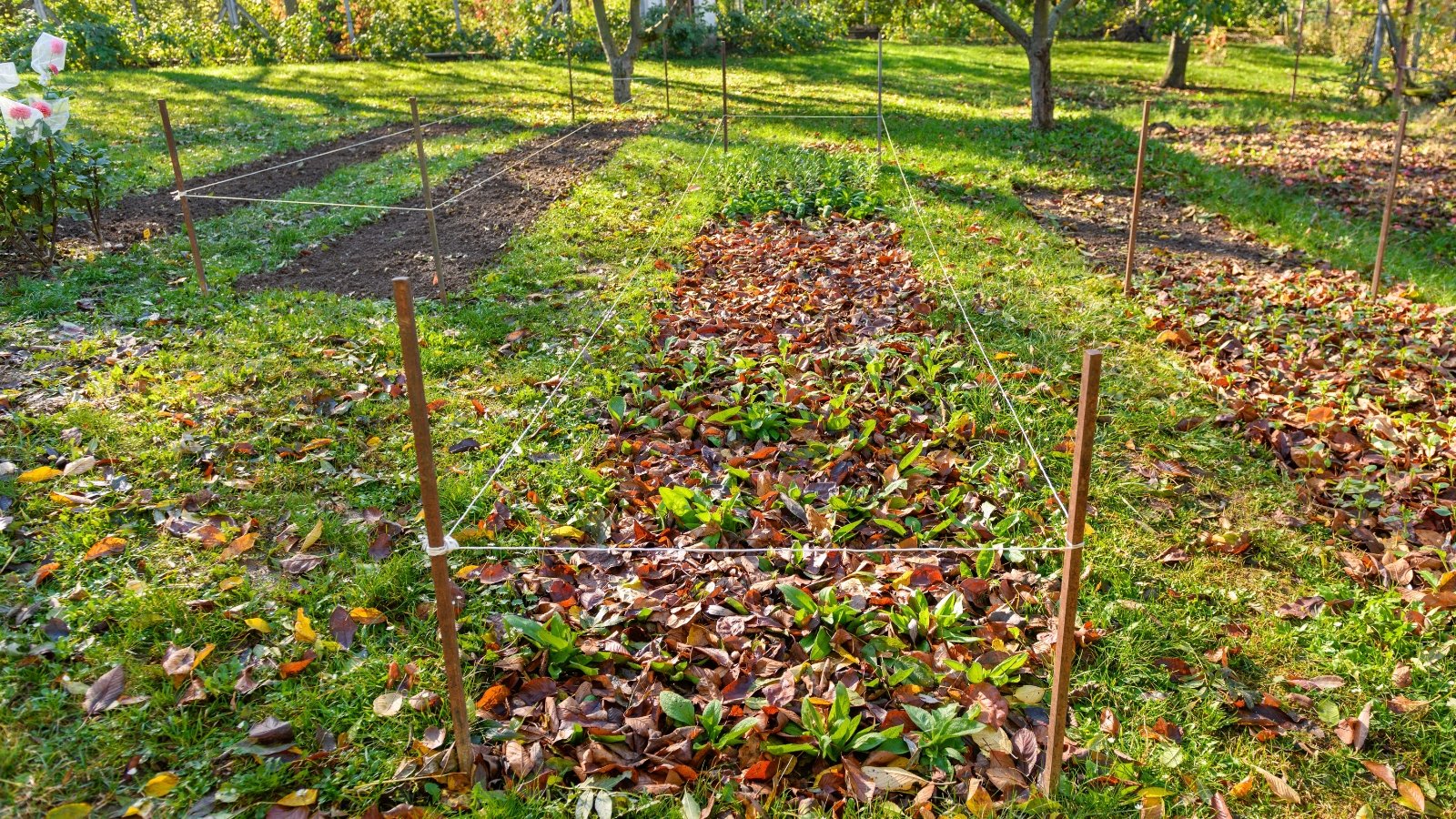
Turf plays a role in the landscape to visually emphasize your home and give room for play, enjoyment, relaxation, and space for pups. It also requires more intensive maintenance (both chemical and equipment) and more water than other plantings.
Preserve the grassy spaces you enjoy and that define the space, but consider making them smaller in scale by adding another planted bed. Converting the lawn into alternate ground covers is another option that’s intensive initially but less so in the long run.
Too Many Leaves?
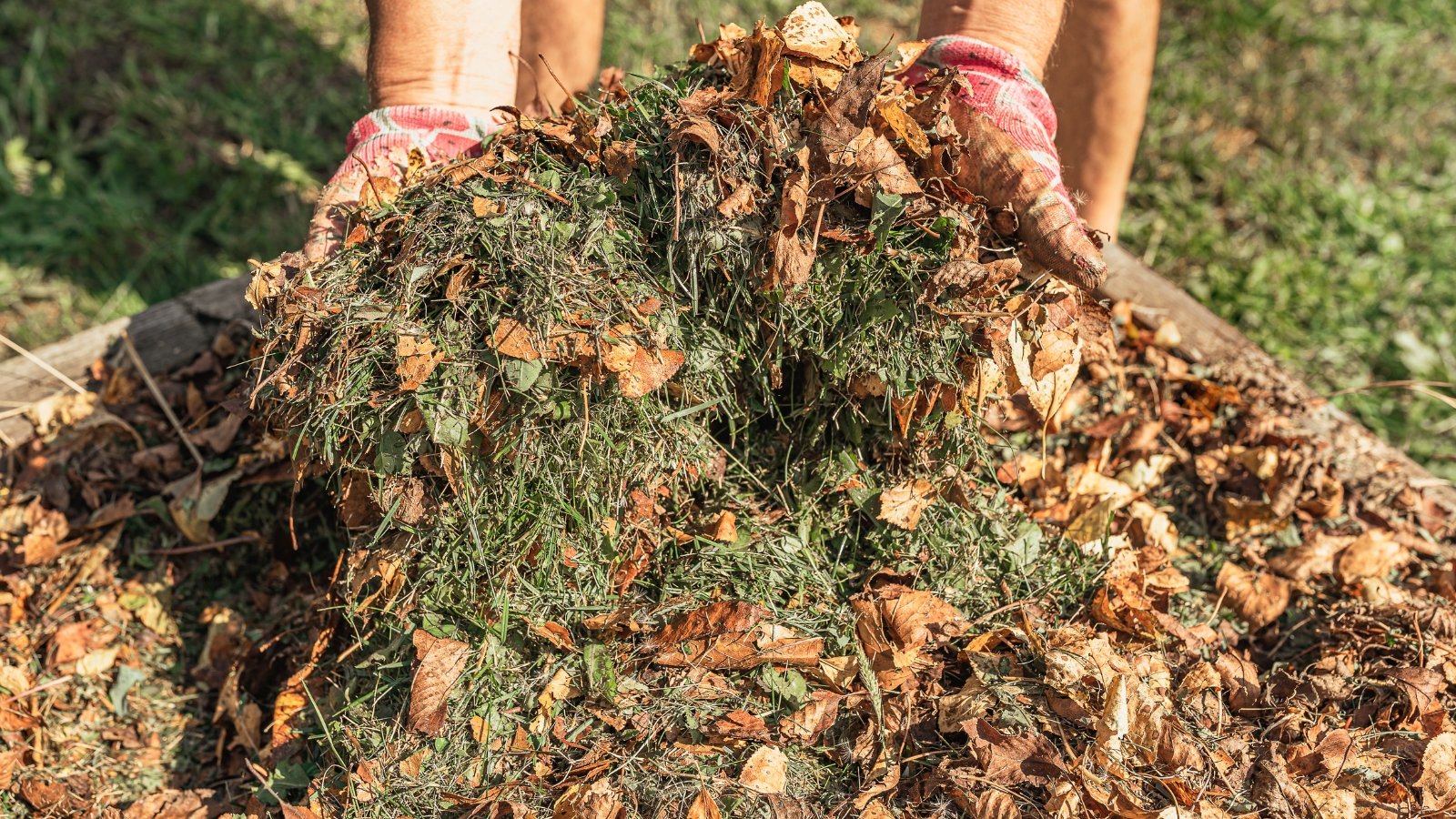
If you find yourself swimming too many leaves to leave in place—lucky you! This means you have substantial trees nearby (and their autumn bounty). If you have enough to go around the beds and then some, there are options for the surplus. And it’s okay not to use every leaf—do what works best for balancing your site.
If you compost, reserve them to add to the pile. They make a great source of carbon-rich “browns” to add to the mix.
Pile for Leaf Mold
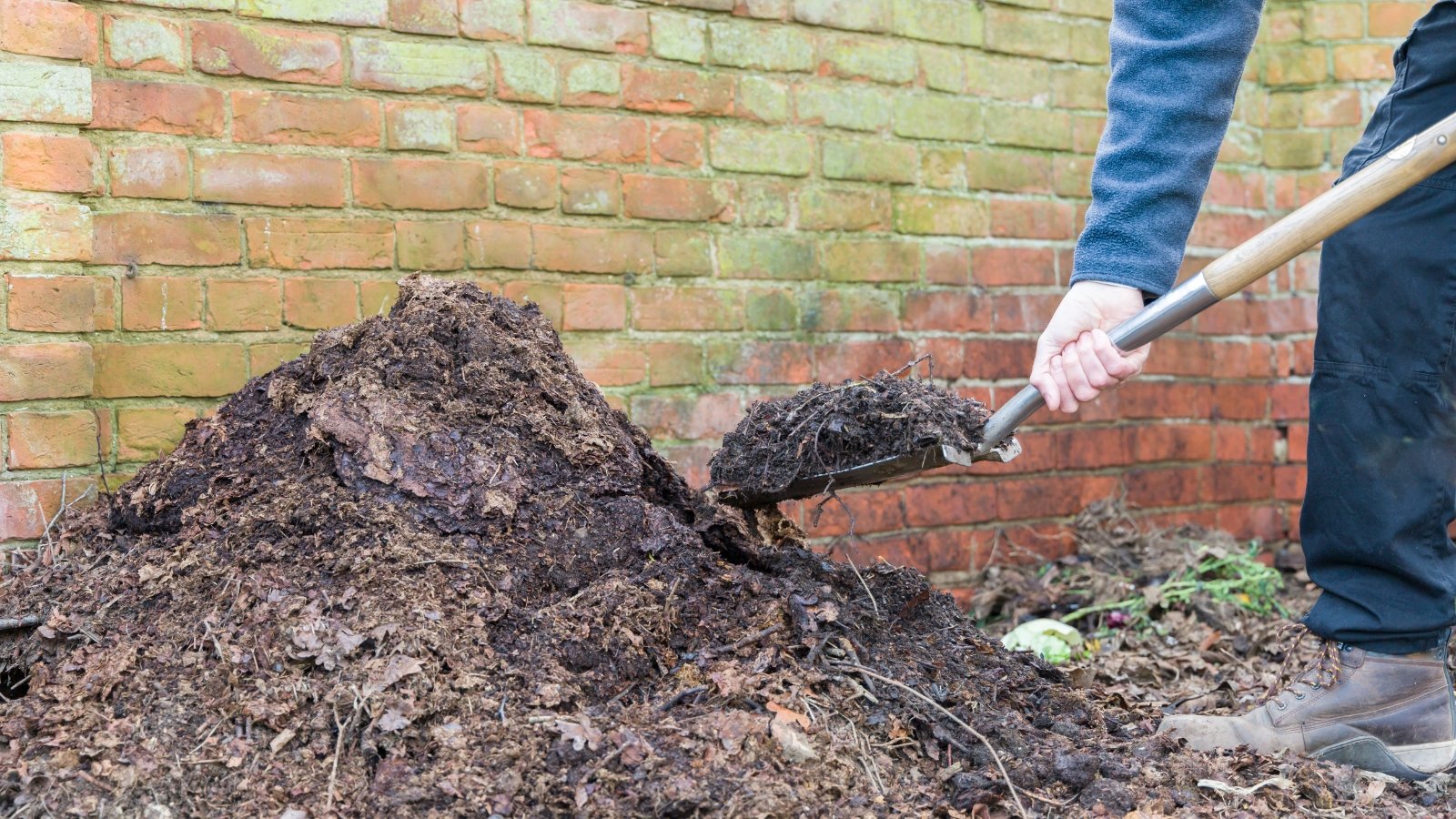
Create leaf mold by raking them into a pile, out of sight. If you have loads of leaves and too many to leave in place at once, let any extras work toward future soil enrichment and mulching.
Leaf mold is easy to make and a valuable soil conditioner. It takes about six months to achieve completely broken-down leaf material, but a working pile is a valuable resource for amending native soils at planting and for topdressing.
Share
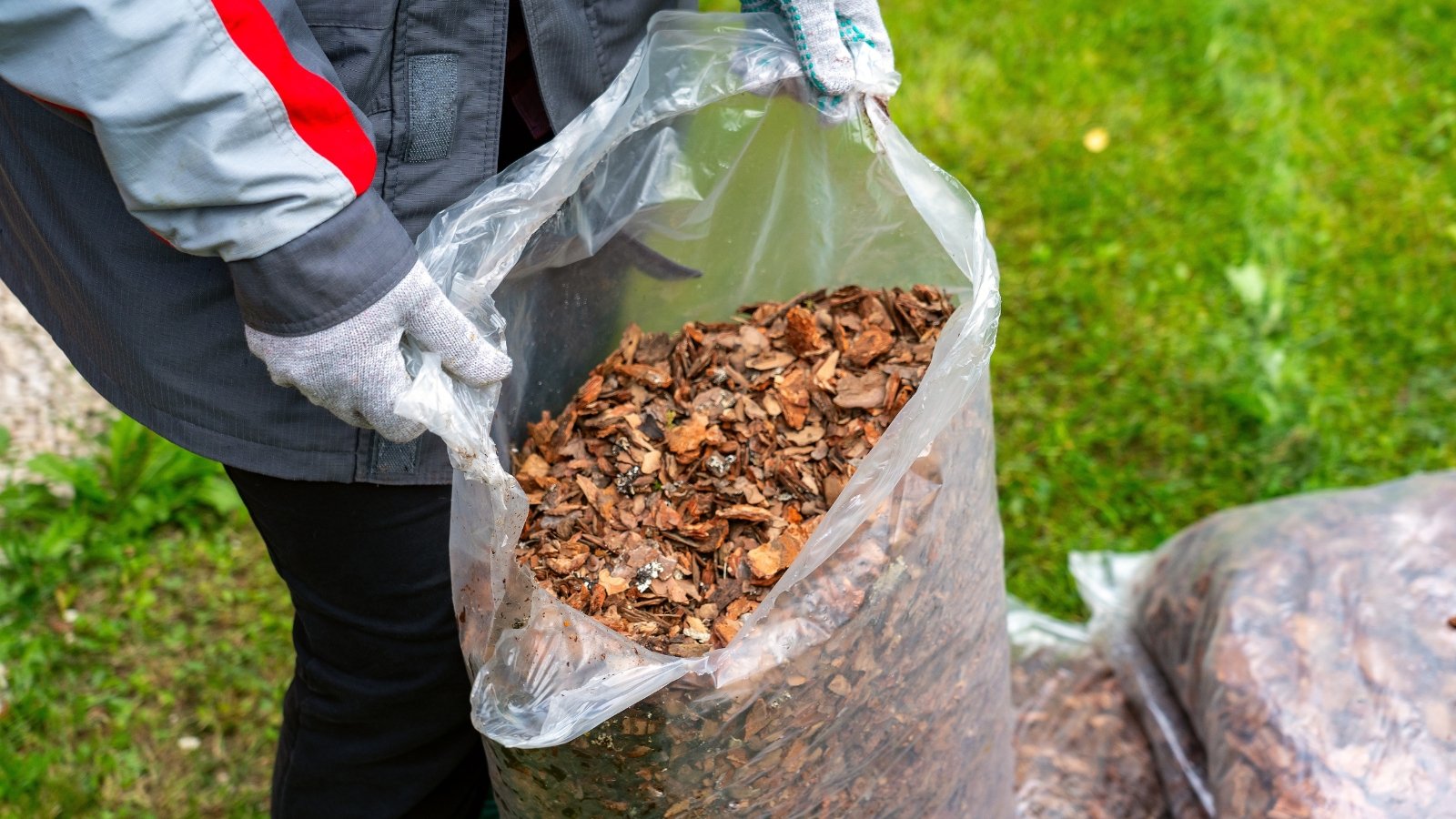
More and more, leaf sharing is a thing. If you have excess, offer to share the extras, as others are looking for leaves to enrich their gardens. My local community garden puts a call out every fall for donations. As a bonus, your leaf share recipient may come pick them up!
If you’re in need of leaves, put the word out. It will take effort, but it’s less costly and more enriching than buying bagged or bulk mulch.
Layer the Landscape
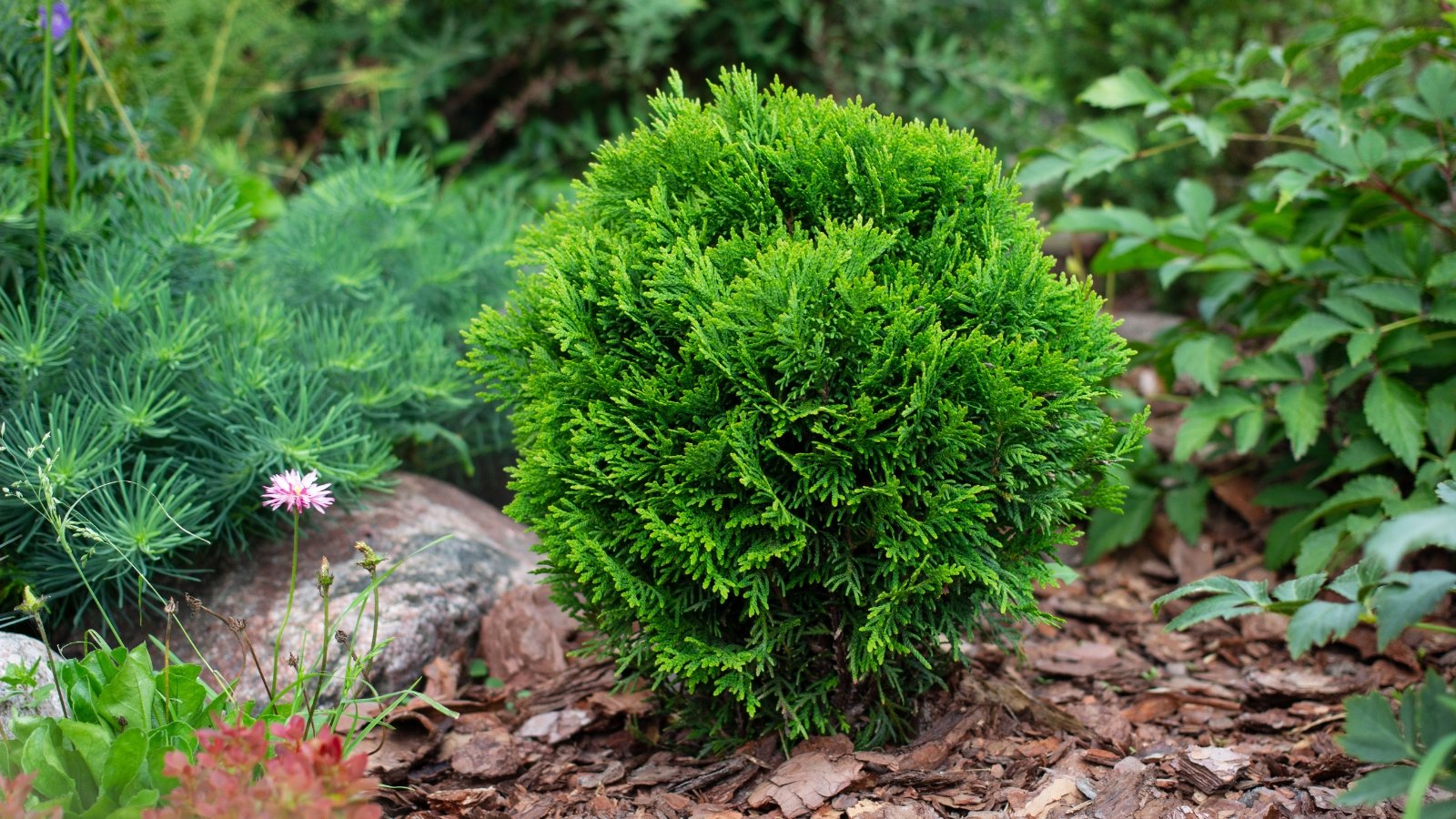
To maintain a balanced display year-round, utilize a mix of evergreens and deciduous specimens. Evergreens anchor the arrangement when flowering shrubs and perennials take a winter break. Needled conifers and broadleaved selections contrast with the interesting forms and seedheads of bare branches. A neat layer of leaf mulch with a clean bed edge works well as an attractive base.
Instead of putting the garden to bed, leave existing plants in place or add new ones to keep it alive and thriving. There are numerous benefits to leaving leaves and vegetation to hold down the fort during the quiet season—they provide ecological services and add a splash of green.
Some perennials are best left standing when they’re dormant. Their foliage and stems offer winter insulation for the crown, especially helpful for marginally hardy growers in cold climates. Those with showy seed pods and fruits provide lasting winter interest and forage for songbirds. Stems and branches become nesting and shelter sites for overwintering pollinators.
Consider keeping those with added benefits, whether for plant health, unique interests, or ecological services, intact. It may take adjusting our aesthetic to appreciate the value of a naturalistic winter garden, but it teems with life, even in dormancy.




